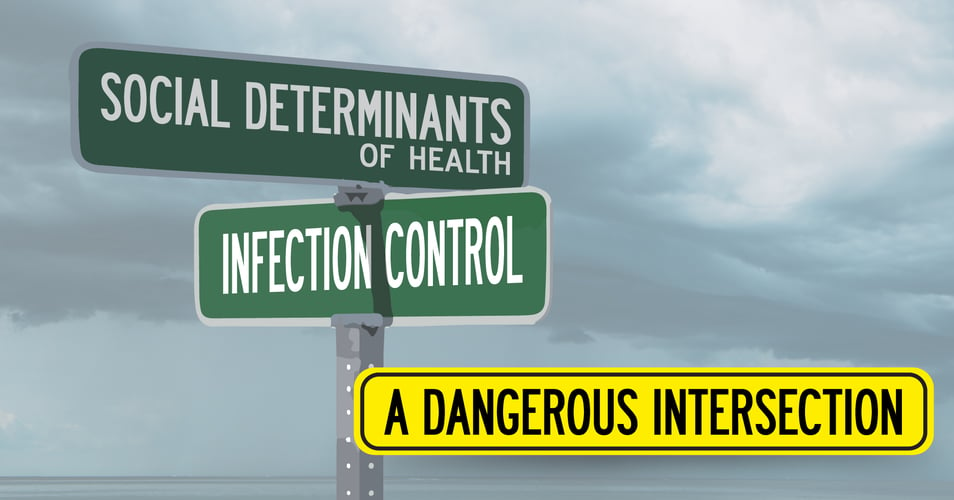A Child Is Born: Remembering Our Tiniest Patients

Most babies are born healthy. Delivered in a hospital, a birthing center, a home, or even a stable, they are bundled up, fed, loved, and go on to grow up with few or no complications.
In those cases where a newborn arrives with a medical condition that requires treatment, however, these tiny patients face greater risks than any adult or even an older child. One of the greatest risks faced by newborn patients is getting an infection. In fact, hospital-acquired infections are one of the leading cause of infant morbidity and mortality in neonatal intensive care units.
Healthy newborns have an immature immune system to begin with, making them less able to handle bacteria, viruses, or parasites. Thankfully, some antibodies from the mother are present in the newborn’s system and remain in the body for several months, helping defend the baby against typical germ exposure. In addition, a breastfed newborn receives additional antibodies through breast milk, especially the colostrum first produced by the mother. Typically, a baby will develop a more mature immune system over time, as he or she is exposed to germs and produces his/her own antibodies to fight them off.
Even with these benefits, healthy newborns can be exposed to life-threatening infections soon after birth. Some infections may pass from mother to child during childbirth. In other cases, newborns come into contact with an infectious agent via a sick adult or child or a contaminated object. With early detection and antibiotics, these bacterial infections can be treated quickly.
A baby born with a health condition that requires immediate treatment, however, may not have some of these natural benefits coupled with an already heightened risk of infection. A premature baby, for example, may not have a strong enough immune system to create the necessary T cells to fight off infection. Babies born with health conditions may not have access to breast milk, depending on their diagnosis, the mother’s health and/or her ability to produce milk. Babies already struggling with a primary medical issue (conditions of the heart, lung, bowel, etc.) may not be strong enough to fight off an infection as well. Most importantly, these tiny patients may require medical devices that cross the skin barrier such as breathing tubes or intravenous lines. Any germ that enters the baby’s system can quickly enter the bloodstream, causing life-threatening sepsis. Even preventive broad-spectrum antibiotics, given when a baby is high-risk for infection, bring with them their own set of risks, including invasive candidiasis (“thrush”), a fungal infection that can flourish when competing bacterial flora are destroyed.
Infections in the Neonatal Intensive Care Unit, or NICU, are closely monitored, tracked, and evaluated both by hospitals and federal health agencies. Progress has been made in reducing NICU infection rates, with CLABSI rates down by 61% and Ventilator-Associated Pneumonia (VAP) rates down by 50% in critically-ill neonatal patients between the years 2007-2012 (most recent data available).
Research demonstrates that neonatal infection rates can be improved using these methods:
- Increasing nurse staffing: Research shows a direct correlation between under staffing in nursing and higher infection rates in the NICU
- Antimicrobial stewardship: Using only the amount and type of antibiotic necessary
- Limited steroid use: Steroids can prevent the body from fighting infections by reducing inflammation and increasing glucose levels
- Early enteral feeding: Some research shows that early feeding via a tube helps avoid infection by keeping the bowels moving, allowing gut flora to grow (to complete with any invasive bacteria), avoiding the immunosuppressive effect and invasive devices of IV feeding.
- Limited use of invasive devices: Removing ventilator, IV, catheter, and other devices as soon as possible
- Standardization of catheter care practices: Training in and monitoring of catheter insertion
- Meticulous hand hygiene: Ensuring proper handwashing by healthcare workers, caregivers, visitors, and parents
During this holiday season, we urge you to spread the word about ways you and your family and friends can help control infections: Washing hands, finishing antibiotic doses, getting flu shots, and becoming empowered patients.
We wish you and your loved ones a safe, healthy, and happy holiday season.
Editor's Note: This post was originally published in December 2015 and has been updated for freshness, accuracy and comprehensiveness.


![[infographic] 5 Steps to Becoming an Empowered Patient Download and share!](https://no-cache.hubspot.com/cta/default/216314/interactive-178406893211.png)



